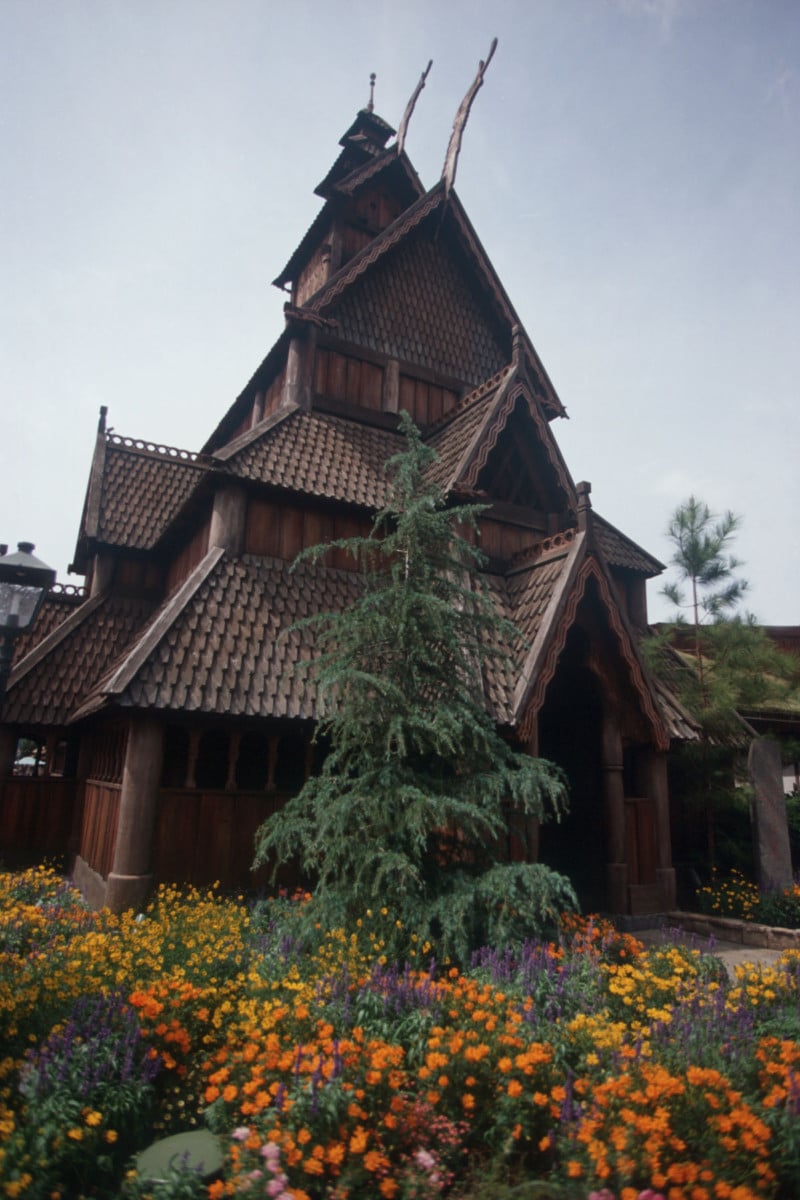When Epcot opened in 1982, it brought us what was referred to as a “permanent World’s Fair” dedicated to the celebration of human achievement and technological innovation. But it also brought us the World Showcase, which gives us glimpses into the cultures of eleven different countries. The Showcase originally opened with nine countries: Mexico, China, Germany, Italy, The American Adventure, Japan, France, United Kingdom and Canada. Two more were added years later with the Morocco opening in 1984, and Norway being the last to open in 1988. Three other pavilions – Spain, Israel and Equatorial Africa, were advertised in Epcot Center books and other various materials, but they were never built. This week and next we are going to talk about the last pavilion built, Norway – my personal favorite.

When plans were being arranged for the new Norway pavilion in Epcot, a group of Norwegian investors came up with the $30 million needed to fund the project. In June of 1988, Prince Harald formally opened the pavilion. The ceremony was broadcast in Norway in one of the longest live satellite transmissions the country had ever experienced. It was a dream and seemed almost too unrealistic until the group of private investors had it built.
There were original plans to establish a Nordic pavilion that represented the countries of Norway, Sweden and Denmark when the Norwegian companies Selmer-Sande and Kloster began work on the pavilion. When negotiations with Sweden and Denmark fell through, it was decided the pavilion would only represent Norway. On May 29, 1986, Minister Kurt Mosbakk laid the foundation while architect Birger Lambertz-Nilsen was responsible for the exteriors and Ulla S. Hjort was responsible for the design of the interiors.
The first years of operation were good years for the pavilion. Norway was the second most popular pavilion in the World Showcase with 4.5 million visitors, but in 1992 sentiments began to change. The investors that contributed two-thirds of the entire production of the pavilion backed out due to disappointing sales and sold their entire stake to the Disney Company. As a result, the Norwegian government decided to give $200,000 each year to Epcot in a five-year period. It was renewed for another 5 years in 1997, but in 2002 Norway decided not to renew the contract, despite recommendations from the embassy in Washington D.C. to keep the contract. Knut Vollebaek, Norway’s ambassador to the U.S. said, “That is not to say that the Norwegian government disapproved of the pavilion. There were just some forces in Oslo that felt it wasn’t necessary to continue with the support.” He added that he is a great supporter of the Pavilion and that it was so popular with Disney guests that they decided to keep it running even without official support. When the Norway pavilion was being built, the 58,000 square feet Nordic pavilion was designed to look like a coastal village and cities such as Bergan, Oslo, Alesund and the Setesdal Valley were used as the inspiration. Being that the sea has played an important role in Norwegian history, the designers felt it was important to give it a coastal look.

As you approach the Norway pavilion, one of the first things to catch your eye is probably the Stave Church, or the Stavkirke, based upon the Gol Stave Church in Norway. Standing in front of the church is King Olaf II, who was also designated as the Patron Saint of Norway. King Olaf II brought Christianity to the people of Norway and, with woodworking skills, helped the people of Norway build Stave Churches.
In the past, when you entered the Stave Church you would see a likeness of King Olaf II dressed in traditional Viking clothing. Also inside was a map that showcased exploration routes that the Vikings took throughout Greenland and Newfoundland. Another display case exhibited a model of the Oseberg. The Oseberg was a Viking ship that was discovered in 1904 in a burial mound, which was also the same ship featured in the opening scene of the “Spirit of Norway” film shown after exiting the Maelstrom Attraction. Not long after the movie Frozen was released, Disney changed the exhibit to an exhibit called “Creating the World of Frozen.” Now inside the Stave Church, you can still view exhibits of Norway’s past and present and how filmmakers used it as inspiration for Disney’s hit movie, “Frozen.”
Come back next Tuesday for Part 2 of the Noway Pavilion…
- Disney Throwback – Do You Remember Body Wars at Epcot? - February 17, 2024
- 15 Fun Facts About Rock ‘n’ Roller Coaster Starring Aerosmith - February 11, 2024
- Disney History ~ Discovery Island - February 8, 2024





I am really enjoying these articles on the WS pavilions — they’re clearly well-researched and I feel like I’ll really notice more details next time I’m in Epcot. Thanks so much for doing them!
Thank you! Corey does a great job, so glad you’re enjoying the series! ~M